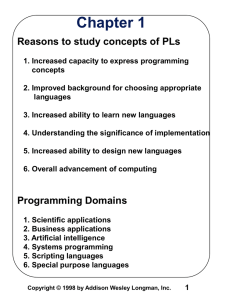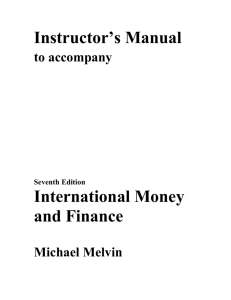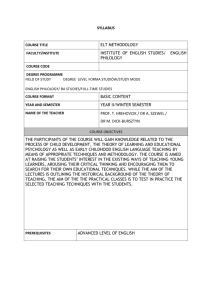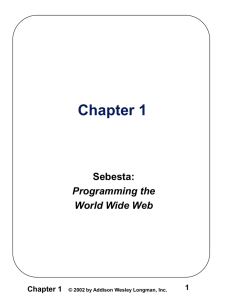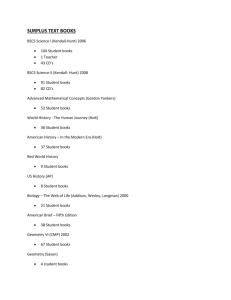Foreign Language Learning Strategies: A selective course
advertisement
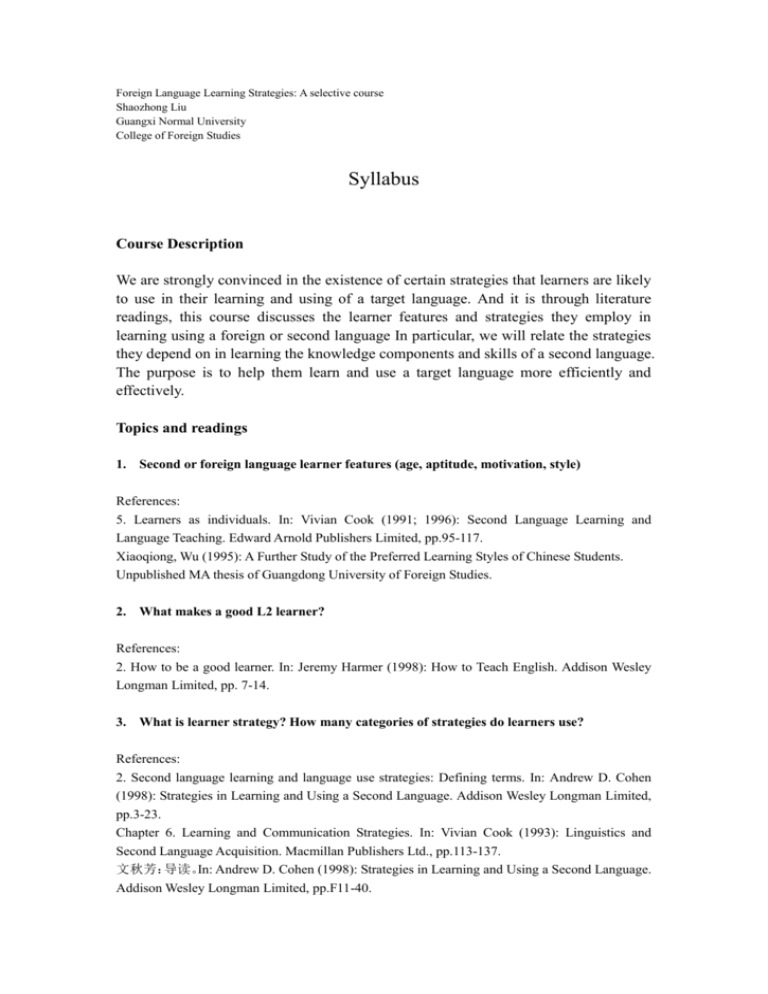
Foreign Language Learning Strategies: A selective course Shaozhong Liu Guangxi Normal University College of Foreign Studies Syllabus Course Description We are strongly convinced in the existence of certain strategies that learners are likely to use in their learning and using of a target language. And it is through literature readings, this course discusses the learner features and strategies they employ in learning using a foreign or second language In particular, we will relate the strategies they depend on in learning the knowledge components and skills of a second language. The purpose is to help them learn and use a target language more efficiently and effectively. Topics and readings 1. Second or foreign language learner features (age, aptitude, motivation, style) References: 5. Learners as individuals. In: Vivian Cook (1991; 1996): Second Language Learning and Language Teaching. Edward Arnold Publishers Limited, pp.95-117. Xiaoqiong, Wu (1995): A Further Study of the Preferred Learning Styles of Chinese Students. Unpublished MA thesis of Guangdong University of Foreign Studies. 2. What makes a good L2 learner? References: 2. How to be a good learner. In: Jeremy Harmer (1998): How to Teach English. Addison Wesley Longman Limited, pp. 7-14. 3. What is learner strategy? How many categories of strategies do learners use? References: 2. Second language learning and language use strategies: Defining terms. In: Andrew D. Cohen (1998): Strategies in Learning and Using a Second Language. Addison Wesley Longman Limited, pp.3-23. Chapter 6. Learning and Communication Strategies. In: Vivian Cook (1993): Linguistics and Second Language Acquisition. Macmillan Publishers Ltd., pp.113-137. 文秋芳:导读。In: Andrew D. Cohen (1998): Strategies in Learning and Using a Second Language. Addison Wesley Longman Limited, pp.F11-40. 4. Strategies in learning a second language References: 5. The impact of strategies-based instruction on speaking a foreign language. In: Andrew D. Cohen (1998): Strategies in Learning and Using a Second Language. Addison Wesley Longman Limited, pp.107-156. 6. Strategies for choosing the language of thought. In: Andrew D. Cohen (1998): Strategies in Learning and Using a Second Language. Addison Wesley Longman Limited, pp.157-214. 3. Learning the components of language. In: Vivian Cook (1991; 1996): Second Language Learning and Language Teaching. Edward Arnold Publishers Limited, pp.39-63. Xiaoqiong, Wu (1995): A Further Study of the Preferred Learning Styles of Chinese Students. Unpublished MA thesis of Guangdong University of Foreign Studies. 桂诗春(1992) : 《中国学生英语学习心理》,长沙:湖南教育出版社. 5. Strategies in using a second language References: 7. Strategy use in testing situations. In: Andrew D. Cohen (1998): Strategies in Learning and Using a Second Language. Addison Wesley Longman Limited, pp.215-263. Siqing Chen (1988): A Study of Communication Strategies in Interlanguage Production by EFL Learners of Chinese. Unpublished MA thesis of Guangzhou Foreign Languages Institute. Faerch, Claus, & Gabriel Kasper (1983): Strategies in Interlanguage Communication. London: Longman. Shaozhong Liu (1997): Negative Pragmatic Transfers by Adult Chinese Learners of English as a Foreign Language: Types, Distributions and Communicative Effects. Unpublished Ph.D dissertation of Guangdong University of Foreign Studies. 4. Processes in using second languages. In: Vivian Cook (1991; 1996): Second Language Learning and Language Teaching. Edward Arnold Publishers Limited, pp.64-94. 6. Strategy training References: Chapter 12. Learner strategy training. In: H. Douglas Brown (1994): Teaching by Principles: An Interactive Pedagogy. Prentice Hall Agents, pp.189-216. 4. Strategy training for learners and the role of the teacher. In: Andrew D. Cohen (1998): Strategies in Learning and Using a Second Language. Addison Wesley Longman Limited, pp.65-106.
